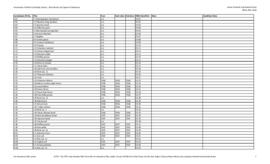Subseries consists of records related to Asian immigration to and settlement in North America. These records pertain predominantly to Chinese immigration and settlement in British Columbia, but also include records pertaining to other Asian diaspora as well as other regions of Canada and the United States. These records document early Asian immigration and settlement following the gold rush, such as the Chinese role in the construction of the transcontinental railway, where Chinese workers were assigned the most dangerous jobs, and anti-Asian sentiment in Canada. Other records in this subseries include materials related to Canadian immigration policy and multiculturalism in Canada, Chinese-language educational materials and children's books, Chinese business and residential directories, city directories for Vancouver and Victoria, and materials related to the Sino-Japanese War. As immigration in this context pertains both to first-generation immigrants as well as their families and descendants, records in this subseries also illustrate the Asian experience in Canada and highlight the development of Asian communities, including social, cultural, religious, political, sporting, and educational activities as well as the activities of organisations such as Chinese trade societies, the Chinese Benevolent Association, the Chinese Canadian Association, and the Chinese Nationalist League of Canada.
This subseries also contains an extensive collection of early photographs of Asian-Canadians and Asian-Americans. Some highlights include historical class photographs from Vancouver's Strathcona School, street scenes from the Vancouver, Victoria, and San Francisco Chinatowns, wedding portraits, and the 1915-1918 photograph album of Jue Fong, then a Chinese-American teenager, which offers rare candid photographs from that time period.
These records in this subseries are varied and include published monographs, pamphlets, directories, catalogues, magazines, maps, government reports, legislation, petitions, memoranda, meeting minutes, speeches, contracts, forms, certificates, licenses, tickets, passenger lists, immigration papers, taxes, invoices and receipts, donation books and fundraising materials, staff rosters, school workbooks, samples of Chinese calligraphy, newspaper clippings, posters and broadsides, newsletters, brochures and advertisements, correspondence, postcards, invitations and event programmes, restaurant menus, artefacts, ephemera, memorabilia, scrapbooks, and photographs, photo albums, and photographic negatives.
